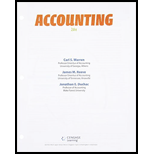
(a)
Segment Analysis
Business can be classified by regions, products or services, types of customers and more; each classification is treated as one segment of the business. Revenues earn from different segments individually, are called segment revenue. Segment revenues are determined from the invoiced data entered in the accounting system. Segment analysis is done to analyze the contribution of different segments to the total operating performance of the company. It is done with the help of horizontal and vertical comparisons.
Horizontal Analysis
This analysis is done to show the trend of various components in financial statements over a period of time. The earliest period is used as the base period and components of financial statements of later periods are compared with the components of the base period.
Vertical analysis
Vertical analysis is the method of financial statement analysis, and it is useful to evaluating a company’s performance and financial condition. Vertical analysis is helpful for analyzing the changes in the financial statements over the time, and comparing the each item on a financial statement with a total amount from the same statement.
To prepare: Horizontal analysis of the revenue of M Corporation from different brand of restaurants
(b)
To prepare: Vertical analysis of the revenue earned from different brand restaurants.
(c)
To draw: The conclusion from the analysis.
Want to see the full answer?
Check out a sample textbook solution
Chapter 5 Solutions
Bundle: Accounting, Loose-Leaf Version, 26th + CengageNOWv2, 2 term Printed Access Card
 Financial AccountingAccountingISBN:9781305088436Author:Carl Warren, Jim Reeve, Jonathan DuchacPublisher:Cengage Learning
Financial AccountingAccountingISBN:9781305088436Author:Carl Warren, Jim Reeve, Jonathan DuchacPublisher:Cengage Learning Financial AccountingAccountingISBN:9781337272124Author:Carl Warren, James M. Reeve, Jonathan DuchacPublisher:Cengage Learning
Financial AccountingAccountingISBN:9781337272124Author:Carl Warren, James M. Reeve, Jonathan DuchacPublisher:Cengage Learning Managerial AccountingAccountingISBN:9781337912020Author:Carl Warren, Ph.d. Cma William B. TaylerPublisher:South-Western College Pub
Managerial AccountingAccountingISBN:9781337912020Author:Carl Warren, Ph.d. Cma William B. TaylerPublisher:South-Western College Pub Survey of Accounting (Accounting I)AccountingISBN:9781305961883Author:Carl WarrenPublisher:Cengage Learning
Survey of Accounting (Accounting I)AccountingISBN:9781305961883Author:Carl WarrenPublisher:Cengage Learning Managerial Accounting: The Cornerstone of Busines...AccountingISBN:9781337115773Author:Maryanne M. Mowen, Don R. Hansen, Dan L. HeitgerPublisher:Cengage LearningCentury 21 Accounting Multicolumn JournalAccountingISBN:9781337679503Author:GilbertsonPublisher:Cengage
Managerial Accounting: The Cornerstone of Busines...AccountingISBN:9781337115773Author:Maryanne M. Mowen, Don R. Hansen, Dan L. HeitgerPublisher:Cengage LearningCentury 21 Accounting Multicolumn JournalAccountingISBN:9781337679503Author:GilbertsonPublisher:Cengage





